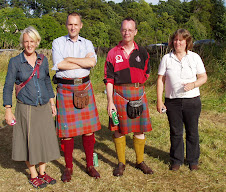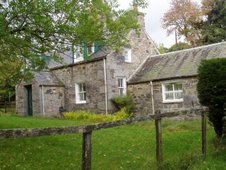Little to report. I did my two circuits of Drummond Place
Gardens. I did some binding-off and some weaving-in and some baby knitting. I
worried about Brexit. We have reached what I believe is called an impasse, in that matter. “Daniel Deronda”
has become a shade more interesting and, sure enough, one or two Jews have
appeared in its pages.
That was an interesting remark of yours, Tamar, about
arsenic being used as a green dye, hence giving that colour something of a bad
reputation.
I did a bit of natural dying some decades ago. A soupy brown
is far and away the easiest colour to achieve. I was lucky enough to find some ochrolechia tartarea – a lichen – on some
stones in Strathardle, and from that got a satisfactory purple and red. It
produces purple on its own, red if macerated in urine or vinegar, as you
prefer. I never got anywhere near green.
It seems remarkable that people living lives of great
hardship, well below what you and I would consider the poverty line, had the
time and energy and intellectual curiosity to discover such things. Once you
have a market for your knitting, and know that ochrolechia will produce valuable colours, it’s reasonable enough
to spend an afternoon looking for it. It’s not abundant (at least, it isn’t in
Strathardle) and there is nothing in its appearance to suggest purple. How did
it get started?
I suppose success with other lichens provoked someone into trying 'em all.



What about "Married in green: not fit to be seen"? I had a little play at natural dyeing when I first retired. The most interesting was red cabbage which yielded pink when stewed with vinegar and pale green when the liquid had bicarbonate of soda added - these colours from the same cabbage. The most vibrant colours I found were a bright tan from rhubarb root and a sort of acid green from carrot tops. How colour-fast any of these would be I never found out.
ReplyDeleteI took a natural dyeing class once, it was great fun, and I felt like an alchemist. I can’t remember what made green though. Madder, Ironwood, Chamomile, copper mordant. That’s the limit of my memory bank this evening. Happy to hear you walked the circuit!
ReplyDeleteUm, the mention of arsenic green was from CKP, not me. That dye (Scheele's Green) was very popular for a while, but began to lose favor after the recipe was published in 1822. It still took decades to be removed from use.
ReplyDeleteoops, correction: Scheele's green wasn't bad originally, but some men "improved" it in 1814 with arsenic to get a brighter green, and _that_ was the poisonous one.
ReplyDelete